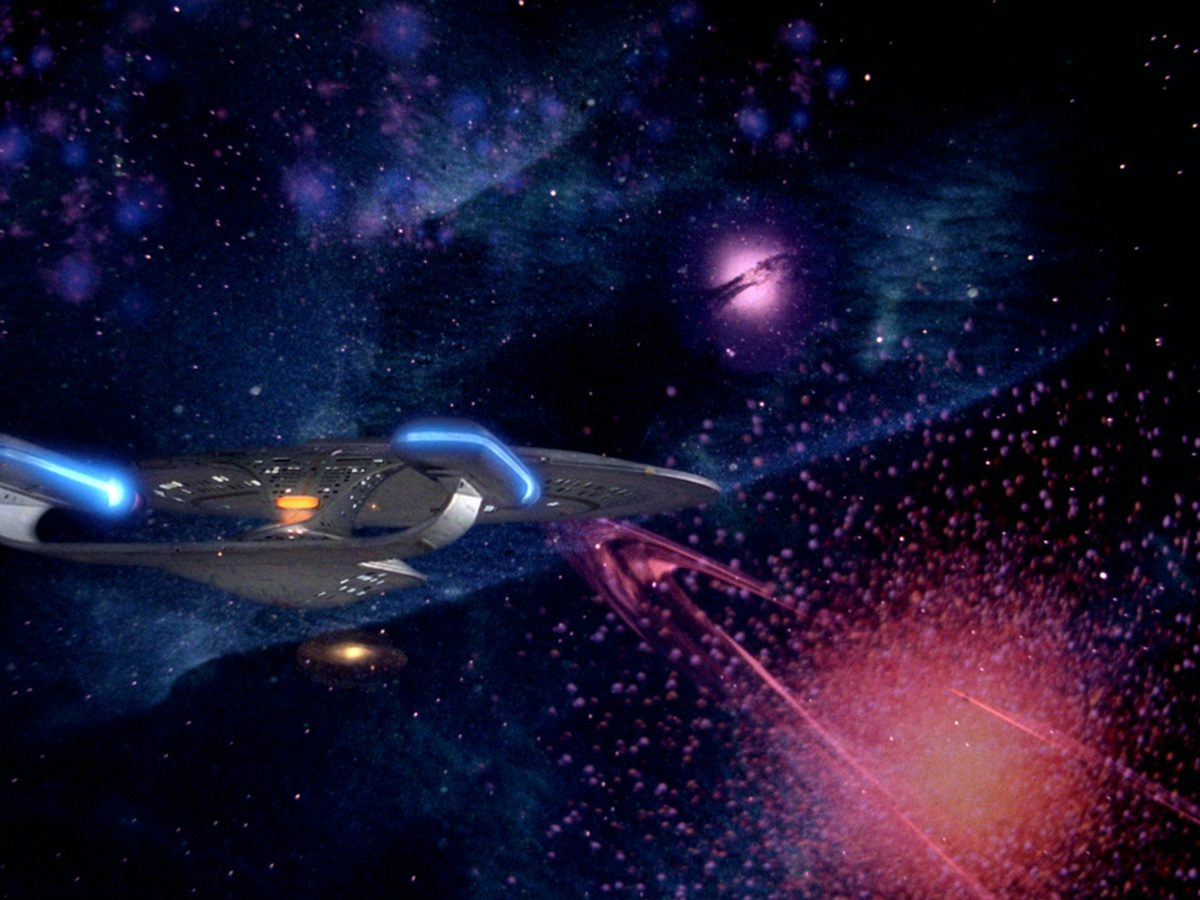“Why is this child here?”
The first great episode of Star Trek: The Next Generation represents such a substantial elevation over its brethren that it takes a minute or two to become accustomed to its quality; everything about “Where No One Has Gone Before” is sharply done. The script is partially from Diane Duane, who wrote a Star Trek novel or two that were quite good; one of my favourite television actors, Stanley Kamel, gives a fantastic guest performance as the arrogant propulsion fucktard known only as Kosinski (and whose lack of a comm badge, and square pin where his rank insignia should be, suggest he isn’t even a Starfleet officer). The real contribution of substance from the episode, however, is in its choice of director: Rob Bowman would go on to direct a dozen episodes of Star Trek: The Next Generation over the course of seasons 1 and 2, and was directly charged with creating a distinct visual style for the series that would set it apart from the original series and anything else on TV at the time. Bowman, who would go on to become a producer of The X Files before directing Fight the Future and later Reign of Fire, grabs Next Gen’s camera by the proverbial balls and doesn’t let go. This is a masterfully composed episode – stylized, visual, and thrilling.
“Where No One” also pleasantly reminds me of the sheer visceral thrill of good ideas, imaginatively presented; this stuff was candy to me when I was 12, deep into books (primarily fantasy and science fiction, of course), and not so much with talking to girls. The simple leap of the imagination represented in Wesley and the Traveler’s assertions that time, space and thought are conceptual forces of roughly equal weight, and which have a substantial real-world connection, is a massive, massive idea – such a nice expansion of sci fi tropes around space/time that I clearly remember it making my head spin when I first saw this episode. That all this comes packaged in such an appealing adventure story – as the Enterprise leaps a few galaxies across space by accident, before further leaping to the edge of reality itself – only made the candy taste sweeter. “Where No One” is effortlessly exciting stuff, with plenty of brain food to chew on.
The edge of reality, where thought becomes real, makes a far more useful strategy for getting to know the inner lives of the principal characters than their drunken shenanigans in “The Naked Now.” For reasons largely related to length, “Where No One Has Gone Before” doesn’t get to get into it much, which is too bad; the thoughts-made-real sequence is a depressingly short montage of strange events which wraps up as quickly as it appears, having tantalized us with a glimpse of Tasha’s homeworld, an insight into Worf’s childhood, and a conversation with Picard’s mother. I could do with a whole lot more. Far more convincingly than several actual two-part episodes, “Where No One” argues for a longer story that could have been told over two successive hours.
And the episode solves the Wesley Crusher problem – promoting the brat prodigy to the bridge as an Acting Ensign, and giving every bookish 12-year-old who was not so much with talking to girls a hero to covet for the next three or four years of the show. Because I was roughly Wesley’s age when Star Trek: The Next Generation was on the air, I didn’t have the paroxysms of rage-hate that purportedly overwhelmed the adult community; I remember learning about the Wesley Crusher problem (to my shock) in an issue of Cinefantastique that described in detail all the Ways To Waste Wesley that the fan community had come up with. (Flesh-melting transporter accident a la Star Trek 1 sticks in my memory.) I was no warp theory savant at that age, but being hand-picked by Captain Picard to sit on the bridge was just cool, man. Watching the episodes over again as an adult I am of course struck by how endlessly out of his league Wil Wheaton is among the principal cast at the beginning of the series, a problem only exacerbated by Wesley’s frequently shitty writing… but hey, compared to me and my friends, Wheaton was James Bond at that age.
The best kept secret of the Picard characterization, as this episode makes clear, is that for all his verbal protests to the contrary, Jean-Luc loves kids. They intimidate him – and a very important connection between Picard and Wesley has the faintest glimmer of a seed here, as the Traveler tells Picard that Wesley is like Mozart, and all he needs is a beginning. I suspect all of Jean-Luc’s reticence around children in general and Wesley in particular is easily explained: he was just like Wesley once, but no one ever invited him to sit on the bridge.
Update: A real winner, “Where No One Has Gone Before” gets four and a half Enterprises out of five.

My first presence on the internet was a Geocities site back in 1997, and having nothing better to do with it, I blogged about the new episodes of Star Trek: Deep Space Nine and Voyager that aired each week. Blogging The Next Generation is like that – for Star Trek: The Next Generation, every single episode, on blu-ray.
